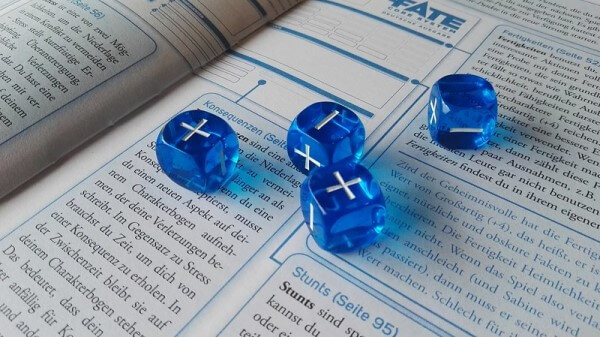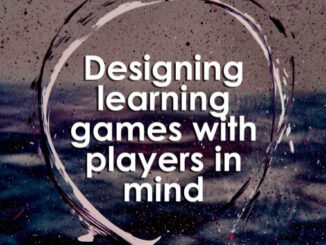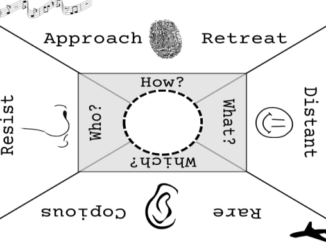
If you mention ‘role-playing games’ (RPGs) to most people, they will probably imagine something that looks pretty much like Dungeons & Dragons (D&D). Like Hoover or Jacuzzi, it has become almost synonymous with the class of thing it exemplifies. But, although it was the first of the modern RPGs, it most definitely was not the last.
D&D was created in 1974, by Gary Gygax and Dave Arneson, and grew out of miniature wargames, using a ruleset from Chainmail, a 1971 game, as its starting point.
Where D&D differed from wargames was that it allowed a player to create and play their own character, rather than playing a military unit – that and the magic and the goblins, I should imagine. Characters took on a race (e.g. Human, Dwarf, Elf etc.) and Class (in the original game only the Fighting man, Cleric, and the Magic-user), and characteristics.
As a result of their actions in the game, characters would gain experience points, which would accumulate and eventually allow them to ‘level up’, augmenting their ‘stats’ for characteristics like Strength, Wisdom and so on, in the process. Combat encounters and other events in the game were resolved by using (polyhedral) dice, and tables of outcomes. Players could not only choose to adventure in the scenarios created and sold by the publishers of the game, but could create their own scenarios using the rulesets, and the raw material for them to do this has been added to by the publication of bestiaries of monsters, spellbooks, and handbooks of items, both magical and mundane, and so on.
In 1977 the game was split into two, with the (relatively) rules-light original version being joined by a more complex Advanced D&D (AD&D), which have since continued to develop separately.
Dungeons and Dragons is available on Amazon
The Challenge of Complexity
The basic characteristics, rules and mechanisms of D&D (and AD&D) went on to inform many of the games and systems mentioned below. But for many, the relatively high demands of the complex rulesets and mechanisms for resolving actions within the game world, remain a barrier to accessing play. That, along with the high fantasy settings, have probably contributed to an (unwarranted, in my opinion) reputation of D&D players (and by association, players of other RPGs), as being ‘nerdy’ or ‘odd’.
It seems like a fairly harmless, or even funny, trope – the girlfriendless teenaged boy pretending to be a wizard in a darkened room with his friends, and has been used to comic effect in shows like ‘The Big Bang Theory’, but such cultural shorthand is never entirely benign. Indeed, mentions of magic are always problematic for certain more conservative sections of society. In the 1980s D&D, perhaps inevitably, became the subject of a moral panic, linking the game to demonic worship, and a number of murders and suicides involving young men. No causal link was found, including through research by the Center for Disease Control, but although now less lurid in nature, these attitudes towards RPGs still persist, making it more difficult for them to be completely acceptable in mainstream applications such as education or workplace learning.
The Quest for a Generic Role-playing System
This article will just scratch the surface of the vast array of RPGs which have been created in the wake of D&D, just focusing on those which are notable for their innovation. Perhaps more interesting to Games-based Learning and Gamification practitioners are the variety of game systems which have emerged. Many of these have sought to ‘solve’ the complexity of D&D and similar systems. This is an attempt to make RPGs not only more accessible to play and create, but also to make games which are shorter in length and to create ‘generic’ rulesets which can move beyond the traditional ‘medieval fantasy’ settings.
Although this article is entitled ‘a history’, what follows is not necessarily chronological.
In 1986, Steve Jackson Games published GURPS (Generic Universal Roleplaying System), which was a system developed to allow players to play in whatever setting they chose (Old West, Noir Detective etc.), while utilising the same basic rules and mechanisms. The series was published as a set of books, first covering the core system and later supplements providing raw material for building scenarios and games in different genres and settings.
One of the notable characteristics of the GURPS system is the ‘Reality Check’, where players are encouraged to step away temporarily from the game mechanics to make a reasoned decision about whether something would work in ‘real life’. For example, a character falls from a height of 100 feet, and damage as rolled has her seriously injured but not dead, but given that she has fallen onto jagged rocks, is that realistic?
In 1986 a free PDF of a reduced ruleset called GURPSLite was made available.

Role-playing in Books and Comics
The RPG community are an inventive lot, and also not without humour, so it was inevitable that parodies of the genre would arise. TWERPS (The World’s Easiest Role Playing System) was published in 1987 by Reindeer Games. Despite being a parody of the overly complex games systems which we prevalent at the time, this is a perfectly playable game in its own right, and became quite popular.
It features four rules and one character stat, Strength, which is used to resolve all of the usual role-playing events, success in combat, damage taken and so on.
TWERPS was published as small comic-style booklets, and several supplements covering different game scenarios and genres were also issued. TWERPS 2nd Edition material is still available.
A whole generation of children were introduced to RPGs in an extremely accessible way through Fighting Fantasy (FF) books by Ian Livingstone and Steve Jackson (no relation to the creator of GURPS). These books built on the Choose your Own Adventure series which preceded them by a few years, by combining the branching scenario format of the former with a dice-rolling RPG mechanic built into the books. Readers played as characters with three stats, Skill, Stamina and Luck.

FF was voted as no 47 in the 50 most popular RPGS of all time, and both the stories from this series and the mechanics have been developed into several other formats including video games, a separate RPG, board games, novels and audio dramas. Inkle’s Sorcery! series was based on the related Sorcery! books by Steve Jackson.
Character Generation
Amazing Engine was a series of games published as books by TSR between 1993 – 1994 using a set of minimal generic rules. The characters had four key stats, and the intention was that the stats could be transferred from book to book, while keeping the same general character concept. This is despite the fact that the books had widely differing settings.
CORPS started life in 1990 as the Conspiracy Oriented Role Playing System – with a Techno thriller game incorporating both magic and science, but was later rewritten to be a generic system and renamed the Complete Omniversal Role Playing System. Characters consisted of two types of statistics, Attributes and Skills, which have to be purchased using using ‘points’ dependent on setting and character type. E.g. a ‘normal human’ might start with 100 Attribute points and 75 skill points whereas a superhero would start with more.
Additional points can be gained if the character is willing to accept ‘disadvantages’ such as being elderly or having some physical weakness. Advancement within the game is also purchased through points.
Just FUDGE it!
While GURPS and other systems were designed to help players create their own games, FUDGE (first, Free-form Universal Donated Gaming Engine and later, Free-form Universal Do-It-Yourself Gaming Engine) goes one step further, being a toolkit for creating games systems. Therefore, designation of things such as what character stats will be used are left to the players to design for themselves. Once attributes and skills (Character Traits) have been decided, they can be valued, instead of numerically, by points, with one of seven adjectives Terrible, Poor, Mediocre, Fair, Good, Great, and Superb. Any character traits which are not described by this sliding scale can be designated as (positively) Gifts and (negatively) Faults. (See also Savage Worlds system for the similar concept of ‘Edges and Hindrances).

FUDGE (now often simply called Fudge) uses Fudge Dice (six sided, with two sides with a plus sign, two with a minus sign and two blank), which are rolled to modify traits to resolve actions in the game.
The FATE (now known as Fate) system also uses these dice, unsurprisingly, as it is based on Fudge. Similarly freeform, Fate assumes that all characters are ‘mediocre’ at any skill, unless that skill is specifically listed for that character as being ones they are good at. Skills can be used in the game to attack, defend, ‘overcome obstacles’, or ‘create an advantage’.
The Fate Core System is available at DriveThruRPG
Fate dice are available on Amazon
Simple ‘points’ systems
Characters also have Aspects and Stunt. Stunts are exceptional abilities (or possessions) which characters can evoke in specific circumstances e.g. ‘Carries a Winchester Rifle’ or ‘Can identify people by smell’.
Aspects are freeform descriptors created by a player for their character, e.g. ‘well-muscled’ or ‘sagacious’. Aspects can also be applied to settings and groups. Both Aspects and Skills are used in the game to decide outcomes.
Another feature of Fate is the use of fate points. Generally fate points are earned by players when things don’t quite go their way and they can spend them to attempt to influence things in their favour.
Descriptor based characteristics

QAGS (Quick Ass Games System) is a another generic RPG system, with a different approach to character creation. Characters are defined in terms of six words, Brain, Body and Nerve – which define abilities and Job, Gimmick and Weakness which help to define what the character does, how they are unique and a major drawback that they face. Each of these characteristics is assigned a numeric value (the latter three are also given a text descriptor, e.g. Lion Tamer, is invisible but only when nobody’s looking, fatal allergy to cats). These values are used to roll a D20 against to resolve events in the game. Dice rolls can also be augmented by the use of ‘yum yums’ basically a bribery system using small edibles.
Games created using the SAGA system use ‘fate cards’ to tell stories and run the game. These card replace experience points, in that the maximum number of cards that a player can hold is designated according to the number of quests that character has completed.
Licensing of RPGs
While the Dominion Rules games system did not depart in any significant way in terms of its mechanics and play, it is notable for being one of the first games to be issued under an open source license, known as the Dominion Rules License, similar to the way that Open Source software works, this encouraged the development of new game material, settings, abilities and so on by an interested player community.
The OGL (Open Gaming License) is a public copyright license by Wizards of the Coast that may be used by TTRPG (tabletop role-playing game) developers to grant permission to modify, copy, and redistribute some of the content designed for WoC’s games, such as Dungeons and Dragons. However, they must share-alike copies and derivative works.
Honourable mentions of other Game Systems should go to EABA (End All Be All) – often praised for its ease of use and portability, RPC54 – a system which uses playing cards to decide the outcomes of events in the game. Also take a look at Saikoro Fiction – a Japanese system which uses different ‘skill tables’ for each game and Gumshoe, a system specifically developed for creating games which involve storylines around investigation and detection.
RPGs and Games-based Learning

So what can the above offer to us as games-based learning practitioners? The concept of a Quest can usefully be applied to many workplace learning, or educational settings. It is not a massive stretch to imagine an educator structuring a semester of study as a Quest. Indeed, this is precisely the idea behind Lee Sheldon’s Multiplayer Classroom (available on Amazon). There are many workplace ‘events’ that could be usefully thought of as ‘quests’ or ‘campaigns’. this has implications for games-based learning, giving us the tools to build simulations and games for projects, change initiatives, mergers and similar. In really forward-looking organisations, this gameful thinking might even be applied to the design of work itself.
Likewise, the varied options for character creation and development give us almost limitless opportunities for facilitating learning which puts us in other people’s shoes. Learning outcomes around leadership, culture, customer experience and so on which require empathic understanding, can be well catered for by RPG character mechanics.
The more recent developments in RPGs are covered in Learning Powered by the Apocalypse
- James Bore – The Ransomeware Game - 13th February 2024
- Ipsodeckso – Risky Business - 23rd January 2024
- Review – Luma World Games - 15th December 2023






4 Trackbacks / Pingbacks